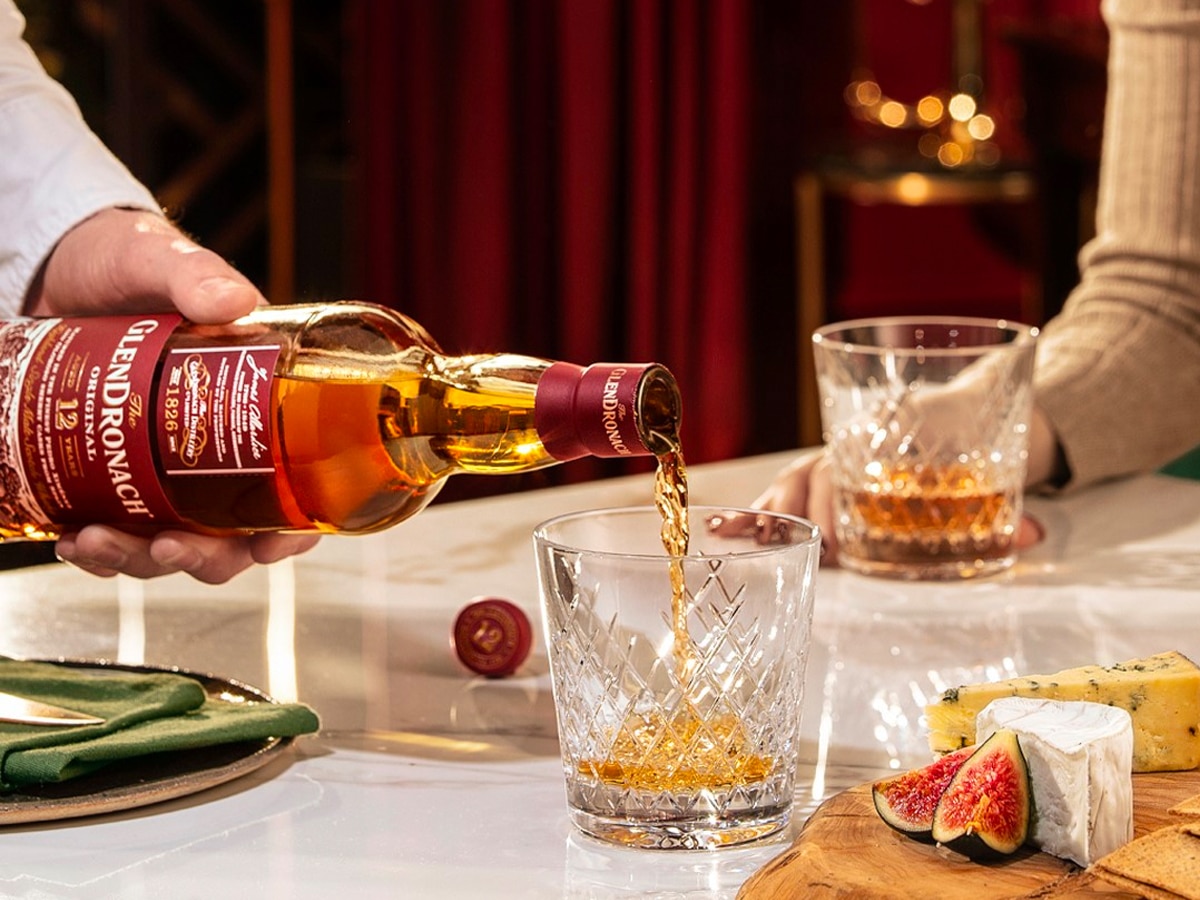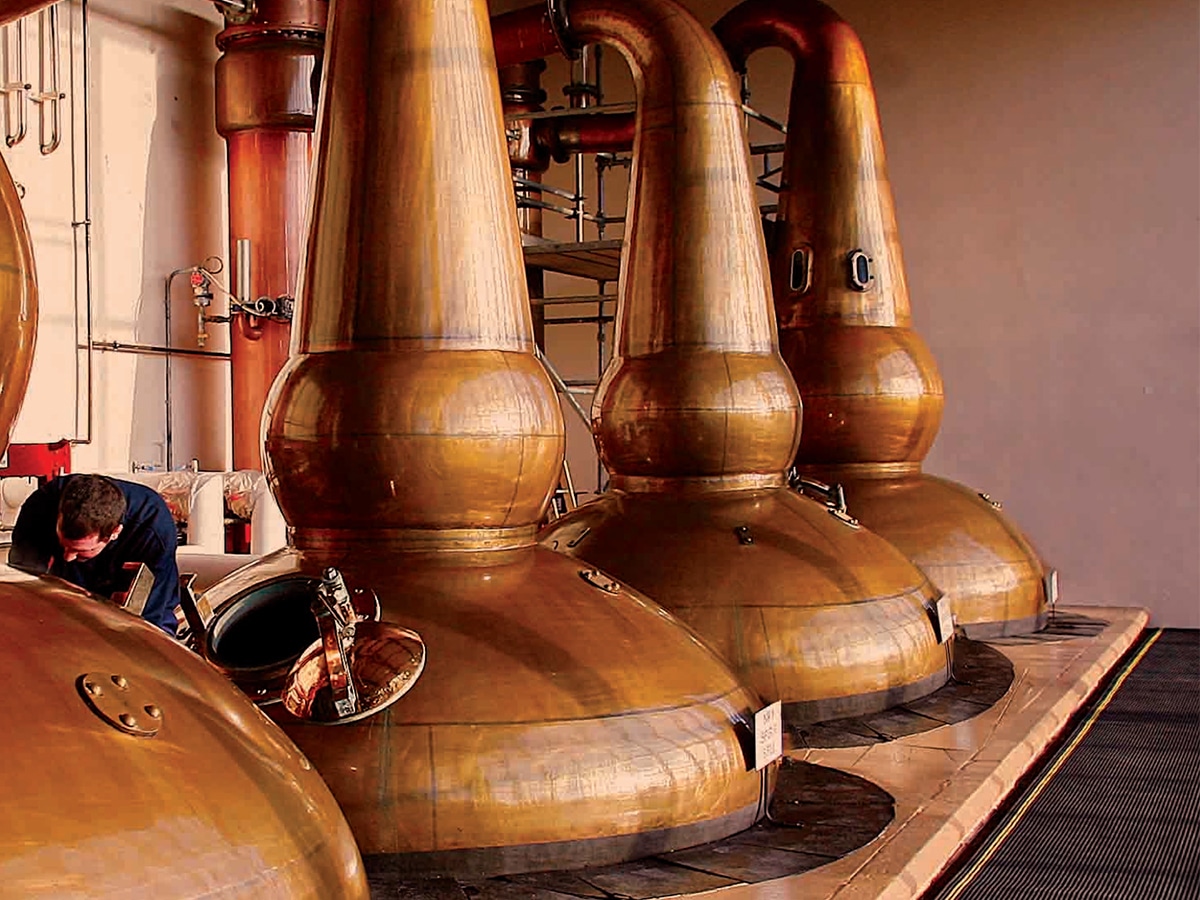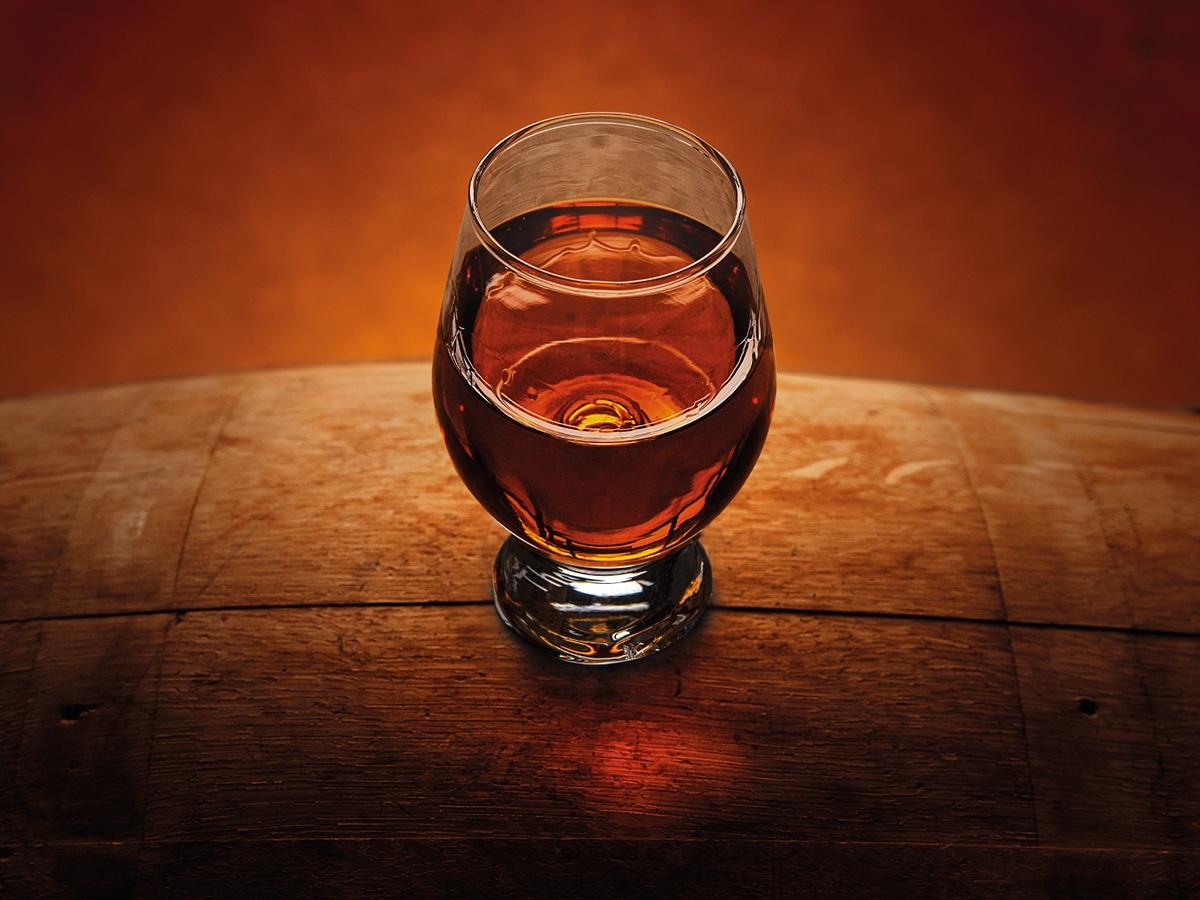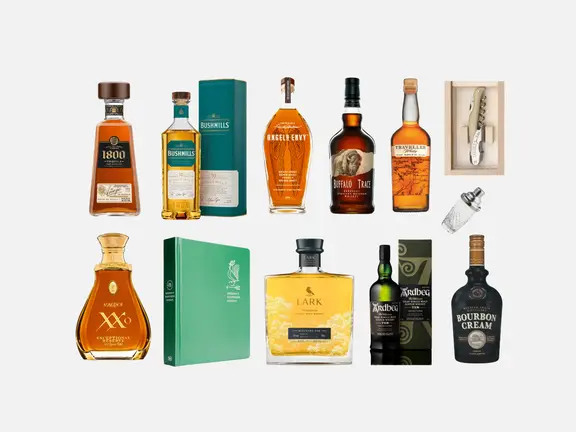
Published:
Readtime: 6 min
Every product is carefully selected by our editors and experts. If you buy from a link, we may earn a commission. Learn more. For more information on how we test products, click here.
More than an indulgence, whisky is a gateway into a deeper experience of adulthood. If the idea of sampling a complex single malt sounds ideal, but you have no experience drinking anything beyond an entry-level blended drop mixed with cola, there’s room to grow. While the single malt variety might be an intimidating start for the whisky novice, a great single malt is the true reflection of whisky excellence, and what better time to experiment than now?
Grab a bottle for yourself and one for your Dad, sit back, relax and enjoy learning more about your single malt journey.
RELATED: Want to learn more about whisky? Check out our comprehensive guide to whisky here.

Pick the Right The Glass
First thing is first, you’re going to need something better than a shot glass if you’re going to savour a neat great whisky. There are a few great options that we’ve outlined on our list of the best whiskey glasses, but generally, you’re going to want a lower-volume glass. For instance, a highball wouldn’t make sense when you’re trying to smell and taste the contents of the whisky.
Here are some examples to consider:
- A tulip glass, aka the ‘copita-style’ glass, is ideal for drinking the single malt, as the tighter neck of the glass concentrates the taste and smell (or the ‘nose’) of the whisky.
- A standard lowball, old-fashioned glass, brandy balloon (snifter), or a purpose-built whisky glass like the NEAT glass and the Glencairn Crystal are also ideal.
- The NEAT or Naturally Engineered Aroma Technology glass has a wide-set mouth, resembling a shorter, fatter science beaker. The result of a misfire during production, the wide glass helps to spread the alcohol in a single malt whisky’s nose, making it more palatable.
- The Glencairn Crystal Whisky Glass is purpose-fired solely for drinking whisky. It has a beautiful tapered neck, comes in a pair and retails for about eleven dollars, so you and your dad can have a drink together or via social media during this pandemic-affected Father’s Day.
If you’re feeling particularly extra and need a goblet, the premium version is cut crystal embossed with Scottish tartan, and costs around one hundred dollars. Whatever you choose, you’ll be able to find your ideal glass to order online.
Select a Strength to Suit
When it comes to premium whisky, even the slightest of changes make a major difference. Scotch has a tailored history of tradition handed down over many years, and as such, finding ways to expand and develop upon the existing flavour profiles can be challenging, but as many a distiller has learned, it comes down to the casks, and rightfully so.
Between 40-70 per cent of the character of a malt whisky develops during the ageing process, with the type of cask used playing a significant role. Will it take on sweet characteristics? Earthy notes? Vanilla flavours? Despite what you may think, the vast majority of a whisky’s flavour profile is developing from the cask, not the distillation process itself.
On one hand, bourbon barrels generally add vanilla, honey and fruit to the dram, finishing with a light, dry sweetness, while sherry casks, like the ones used by Highland Scotch producers such as The GlenDronach contribute richer sweetness with vanilla and dried fruit notes including raisins and prunes. These differences may be subtle to the novice, but to distilleries that birth these releases, cask selection is key.

3 Steps to Develop Your Whisky Palate
Like many things in life, there’s no right or wrong way to enjoy whisky, and the key to developing your whisky palate is simple – Try a lot of whiskies. By creating a reference point for what you do and don’t like, you’ll better understand how to articulate your preferences and slowly over time, you’ll identify flavour profiles. But aside from simply diving into dram after dram, there are a few terms every whisky drinker should be aware of.
1. Rich vs Light
Perhaps the most straightforward of tasting notes, rich and light refer to the depth of flavour in a whisky. Specifically, rich whiskies tend to evoke a strong flavour characterised by the wood it has aged in. These whiskies will have deep flavour notes, such as spice and vanilla, where light whiskies will be very much the opposite. The lighter the whisky, the more likely you are to taste fruits and fresh flavours, from the outset and throughout.
2. Delicate vs Bold
It’s often hard to understand how one could refer to a 40% Scotch as delicate, but it’s not so much about strength and flavours. Delicate whiskies tend to exhibit more grounded tastes such as barley, whereas bold flavours might refer to peat, smoke and robustness. It can take some time to get your head around these terms, but knowing the difference between them can safeguard you from buying a dud dram.
3. Familiarise the Tasting Notes and Come Up With Your Own
If you’ve bought a bottle of whisky, you would have no doubt stumbled across the funny descriptions written on the back. These tasting notes refer to the stages of the flavour profile and can be extremely helpful in determining a whisky’s taste. These include:
- The Nose – The flavour profile distinguished by a whisky’s scent or aroma. To properly ‘nose’ a whisky, swill your glass to release the aromas, gently take a waft by holding the glass about 20cm from your nose and breathe in through both your nose and mouth.
- The Palate – The initial taste flavours. Now, the tongue is divided into four main areas: the tip for sweet, either side for sour or salty, and the middle for bitter. Let the whisky linger in your mouth for a while, hitting all points of reference. Try to wade past the burn and unearth the more complex flavours.
- The Finish – Once you taste the whisky, the finish is the lasting imprint it leaves on your mouth. A short finish refers to a flavour that quickly dissipates after swallowing, whereas a long finish can sit in your mouth well after the dram is done.
After reading these notes, come up with a few of your own! That’s the fun part of tasting whisky and the final step to developing your palate. We love keeping track of our notes in a notebook and tracking how our palate has developed over time.
After You’ve Started Developing Your Palate
Interested in more whisky stories? Here are a few stories to get you started:
Know Your Whisky
Whisky Gift Ideas
Join Our Exclusive Community!
WINNER– Media Brand of the Year, 2025
WINNER– Website of the Year, 2024


































Comments
We love hearing from you. or to leave a comment.